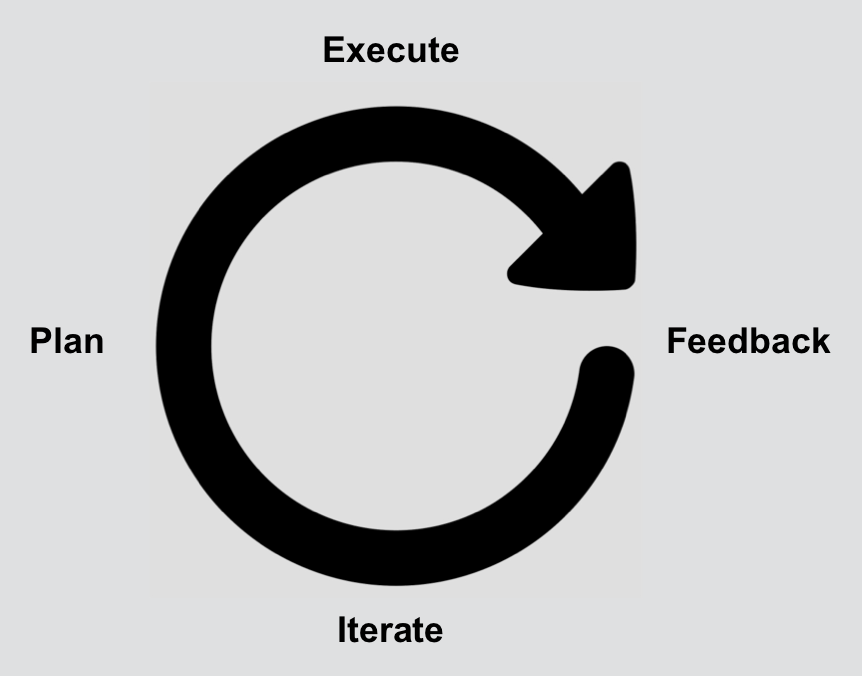
Introduction
Agile Methodology “advocates adaptive planning, evolutionary development, empirical knowledge, and continual improvement, and it encourages rapid and flexible response to change” - It’s part management practice and part mindset and philosophy that can be adapted to any context, and we love this mindset for achieving high performance athletic results no matter an athlete’s background or current circumstance.
Agile Training and Coaching
Let’s break down our working definition. Adaptive planning in a coaching context is the practice of understanding an athlete’s unique circumstances (running history, motivation, talent, race goals, nutrition habits, sleep habits, injury history, etc.) and developing a plan that best suits their circumstance and goals.
Evolutionary development and continual improvement flow from the collection of empirical knowledge (e.g. HRV, heart rate data, or pace data) and, in this case, non-empirical knowledge (i.e. subjective feedback) coupled with the practice of rapid and flexible response to change.
There is a specific communication style unique to the Agile Methodology that facilitates this process. It’s called Scrum. Essentially, teammates communicate frequently for short periods of time amongst themselves and with project stakeholders. In the case of Agile Coaching, communication is between coach and athlete plus other potential teammates such as a medical practitioner, nutritionist, and/or strength and conditioning coach.
As the coach and the athlete meet (standup) regularly and review objective and subjective feedback, the coach can make inferences about how the athlete is responding to training stimulus and other environmental factors (like lifestyle changes, work stress, etc.). As necessary, the coach can adjust the athlete’s training plan in real time. This process of planning, executing, gathering feedback, and adapting a plan is known as iterative development and is the heart of the Agile Methodology.
In sum, in an Agile coaching and training context, a coach and athlete work together (perhaps with a broader team including medical or coaching professionals) to develop an individual athlete plan. This initial plan is high-level. It might include a few key races and cycles of base development, peaking, and recovery that support the key races. Keep in mind that, in an agile context, this initial plan is always subject to change.
From an initial high-level plan, the coach and athlete will plan an increment of work to execute (say 4-6 weeks). Then the coach and athlete will break that work down into smaller increments called sprints. Sprints last one week. The coach and athlete may meet daily or once per week to gather feedback and determine the necessity of iterating on the plan from week-to-week (this is flexible and rapid response to change).
The Daily/Weekly Standup
The stand-up is a cornerstone of Scrum communication. Stand-ups are short meetings intended to keep team members constantly informed of progress and obstructions. Software teams stand-up daily for 15 mins to discuss what they did yesterday, what they’re doing today, and whether anything is blocking them from accomplishing their mission.
In a coaching context, the more that coaches and athletes communicate, the richer the process and outcome are. Coaches and athletes will discuss training progress and subjective lines of inquiry about the athlete’s physical and mental state.
Decentralized
Agile Methodology is all about team function. An athlete and a coach are a team uni. The athletes plays a vital team role in agile. The athlete is closest to the information about their readiness to train.
Athletes must listen to their bodies, ask tough questions of themselves, and learn to use objective data along with their subjective feelings to make good decisions.
And athletes must communicate with their coach about what they’re feeling, how they’re training is progressing, and how motivated they are.
Software is never done…
There is a saying in software that a product (or project) is never done. Philosophically, this means that there is, by design, no end to the evolutionary development process. This philosophy holds true for the athlete in you. You’re engaged in a continuous process of living as a better version of yourself. You’re on a ceaseless journey toward mastery.
